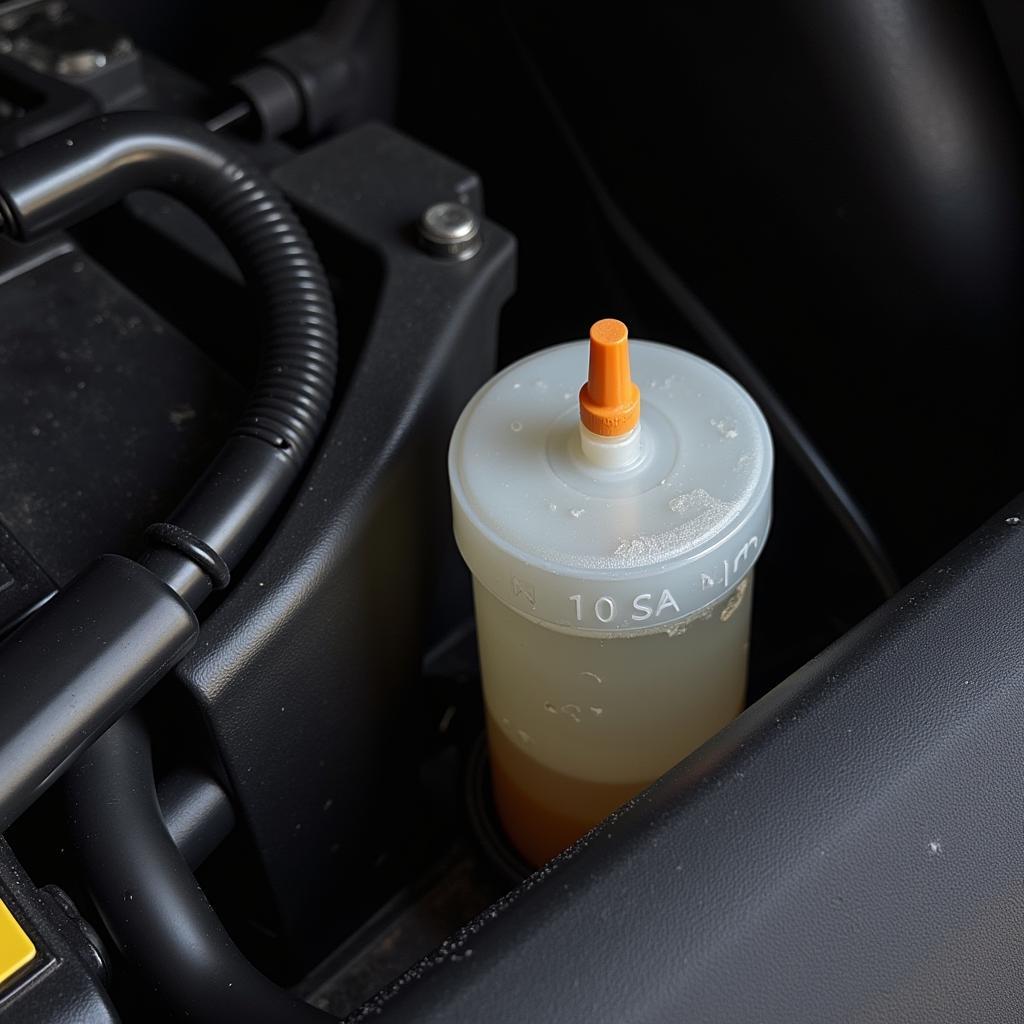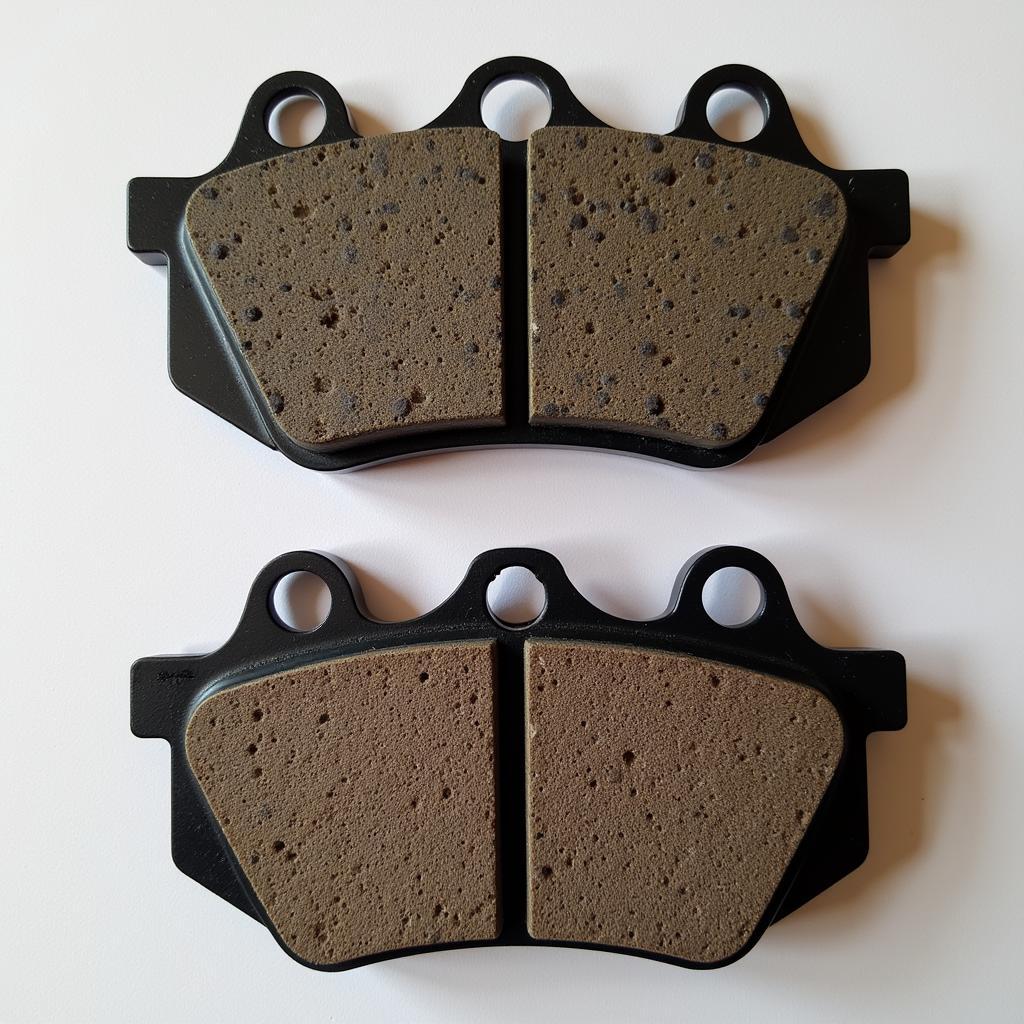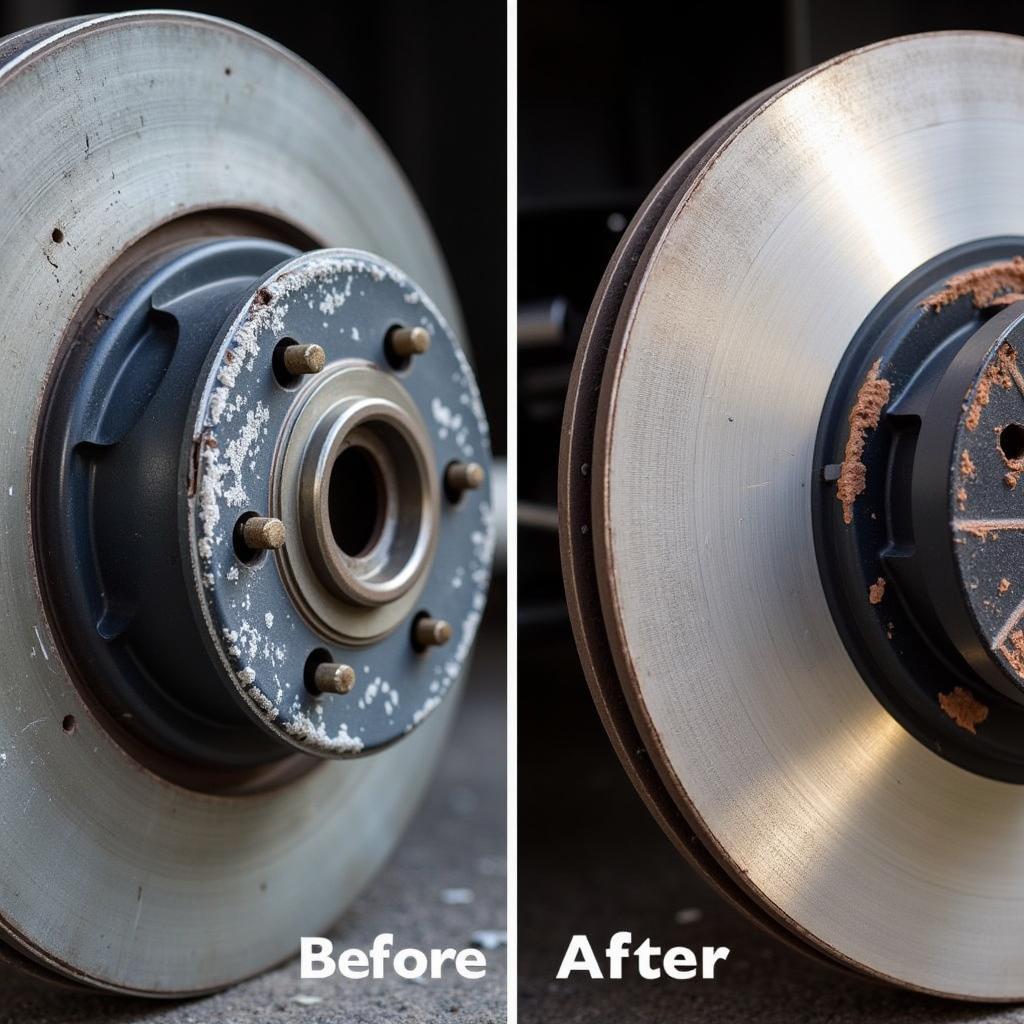Seeing a warning light illuminate on your dashboard can be a nerve-wracking experience, especially when it concerns your brakes. If your Jaguar’s brake pad warning light has turned on, it’s crucial to understand what it means and take appropriate action. This article will guide you through the common causes of a Jaguar brake pad warning light, how to diagnose the issue, and the necessary steps to address it.
Understanding Your Jaguar’s Brake Pad Warning System
Your Jaguar is equipped with a sophisticated system designed to monitor the condition of your brake pads and alert you when they need attention. The brake pad warning light, often a circular symbol with parentheses on either side and an exclamation mark in the center, is a key component of this system.
The warning light is triggered by a sensor embedded within your brake pads. This sensor, a small piece of metal, is designed to make contact with your brake rotor when the brake pad material wears thin. This contact completes a circuit, illuminating the warning light on your dashboard.
Common Causes of a Jaguar Brake Pad Warning Light
While the most common cause for the brake pad warning light is worn brake pads, several other factors can trigger this alert.
- Worn Brake Pads: Over time, your brake pads naturally wear down due to friction generated during braking. When the pad material reaches a certain minimum thickness, the wear sensor contacts the rotor, activating the warning light.
- Faulty Brake Pad Sensor: Like any electrical component, the brake pad sensor itself can malfunction. A damaged wire, corrosion, or a faulty sensor can cause the light to illuminate even if your brake pads are not worn.
- Low Brake Fluid: Brake fluid is essential for transmitting the force you apply to the brake pedal to the calipers, which engage the brake pads. If the brake fluid level is too low, often due to a leak in the system, it can trigger the brake pad warning light.
- Issues with the Brake Hydraulic System: Problems within the brake hydraulic system, such as a malfunctioning master cylinder or ABS module, can also trigger the warning light.
Diagnosing the Problem
When your Jaguar’s brake pad warning light comes on, it’s crucial to diagnose the root cause before taking any further action.
Step 1: Check Your Brake Fluid Level.
Locate the brake fluid reservoir under the hood of your Jaguar. The reservoir is usually a translucent plastic container with a clearly marked minimum and maximum level. If the fluid level is below the minimum mark, you likely have a brake fluid leak.
 Jaguar Brake Fluid Reservoir Low
Jaguar Brake Fluid Reservoir Low
Step 2: Inspect Your Brake Pads.
If possible, visually inspect your brake pads through the spaces between the wheel spokes. Look for significant wear on the pad material. If you see less than ¼ inch of pad material remaining, it’s time for a replacement.
 Worn Brake Pads on a Jaguar
Worn Brake Pads on a Jaguar
Step 3: Consult a Qualified Mechanic.
If you are uncomfortable inspecting your brake system or suspect the issue might be more complex than worn brake pads, it’s crucial to consult a qualified mechanic. They have the expertise and equipment to diagnose the problem accurately.
What to Do When Your Jaguar Brake Pad Warning Light Turns On
- Do not ignore the warning: Driving with worn brake pads or a faulty brake system is incredibly dangerous.
- Reduce your speed and drive cautiously: If you must drive your Jaguar, do so with extreme caution. Avoid sudden braking and maintain a safe distance from other vehicles.
- Schedule an inspection immediately: Contact a qualified mechanic specializing in Jaguars to diagnose and repair the issue.
Jaguar Brake Pad Replacement and Resetting the Warning Light
Once a mechanic has diagnosed the problem, they will recommend the appropriate course of action. If your brake pads are worn, they will need to be replaced. In some cases, the brake pad sensor might also need replacement.
After replacing the brake pads or addressing the underlying issue, the mechanic will reset the brake pad warning light. This reset process often involves using a specialized diagnostic tool to communicate with your Jaguar’s onboard computer and clear the warning.
 Mechanic Resetting Jaguar Brake Pad Warning Light
Mechanic Resetting Jaguar Brake Pad Warning Light
Maintaining Your Jaguar’s Brakes for Optimal Performance and Safety
Regular brake maintenance is crucial for ensuring the optimal performance and safety of your Jaguar.
- Follow the recommended brake inspection schedule: Consult your Jaguar’s owner’s manual for the recommended brake inspection intervals.
- Be mindful of your driving habits: Aggressive driving habits, such as frequent hard braking, can accelerate brake pad wear.
- Use high-quality brake pads: When it’s time for brake pad replacement, opt for high-quality pads designed for your specific Jaguar model.
Conclusion
The brake pad warning light on your Jaguar is a crucial safety feature designed to alert you of potential problems with your braking system. Understanding what this light means and how to respond can help you stay safe on the road and keep your Jaguar performing at its best. If you see this light illuminated on your dashboard, don’t delay – address the issue promptly to ensure your safety and that of others on the road.

